May 29, 2025 | 16:13 GMT +7
May 29, 2025 | 16:13 GMT +7
Hotline: 0913.378.918
May 29, 2025 | 16:13 GMT +7
Hotline: 0913.378.918
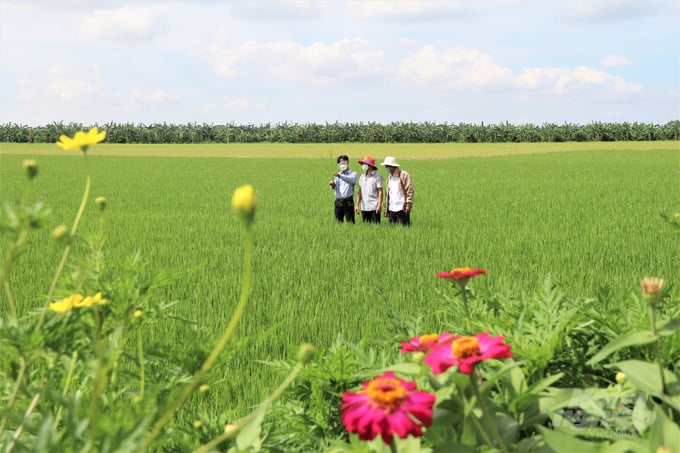
The Strategy for Sustainable Agriculture and Rural Development from 2021 to 2030 with a vision towards 2050 emphasizes the importance of sustainable agricultural development and green economy. Photo: Pham Hieu.
Current agricultural production is a major emitter of greenhouse gases, and it directly contributes to the rising global warming threat. Greenhouse gas emissions in agriculture are mainly concentrated in three areas including: wet rice production, animal husbandry, land management and fertilizer use.
Accordingly, the Government issued the Prime Minister's Decision No. 150/QD-TTg in early 2022 to approve the Strategy for The Strategy for Sustainable Agriculture and Rural Development from 2021 to 2030 with a vision towards 2050. The Strategy emphasizes the importance of sustainable agricultural development, green economy, circular economy, organic agriculture and ecological agriculture in production and business activities.
Commenting on the benefits of farmers and agricultural cooperatives participating in green economy and circular agriculture, Mr. Le Duc Thinh, Director of the Department of Cooperatives and Rural Development under Ministry of Agriculture and Rural Development, said that, the agricultural sector has focused on promoting production and increasing output. The process of over-intensive farming has affected the quality of agricultural products as well as agricultural resources, leaving multiple land, water sources depleted.
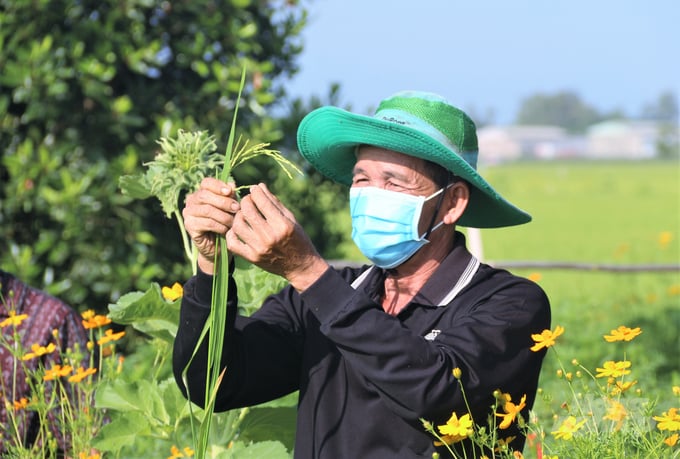
Farmers and agricultural cooperatives have changed their mindset to adapt to the international development trend with the primary focus of green and circular economy. Photo: Pham Hieu.
“These are the lessons that farmers and agricultural cooperatives drew from practice. They have changed their mindset to adapt to the international development trend with the primary focus of green and circular economy”, shared Mr. Le Duc Thinh.
Additionally, the agricultural sector is in the process of developing in the direction of multi-value integration, focusing on improving the values of the agricultural economy instead of outputs. As a foundation towards this goal, various mechanisms, policies and solutions have been implemented in different localities to support farmers and agricultural cooperatives.
Mr. Le Duc Thinh added that, many consulting units, machinery and equipment services providers, supporting elements of science and technology are available so that farmers and agricultural cooperatives can follow the development trend of green and circular economy.
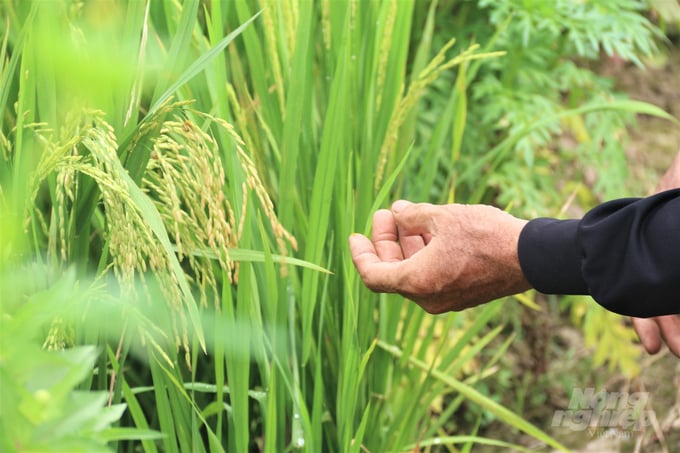
Nearly 2,300 cooperatives have implemented solutions to promote circular economy and diversify agricultural products. Photo: Pham Hieu.
Out of approximately 19,000 agricultural cooperatives across the country, nearly 2,300 of which have implemented solutions to promote circular economy and diversify agricultural products. Namely, they have utilized agricultural by-products to recycle, improve value and income for the farmers.
On the other hand, there are still many challenges that farmers and agricultural cooperatives face when developing green economy and circular agriculture.
According to Mr. Le Duc Thinh, the greatest challenge comes from the general lack of awareness regarding the importance of green economy and circular agriculture.
The second difficulty is the limited scientific research and technical advances to support farmers in developing green and circular economy. Namely, the technology is insufficient regarding the certification, measurement and registration to monitor and evaluate greenhouse gas emissions and reusability of agricultural by-products.
Mr. Le Duc Thinh explained that circular economy helps to diversify products in the value chain, but it is accompanied by an increase in investment costs whereas issues related to policies, credit promotion incentives remain limited.
The final challenge comes from the fact that current farmers' production is fragmented. Therefore, solutions to develop green economy and circular agriculture need to be implemented at different levels. It is necessary to promote training, advice and guidance on building models effectively at the cooperatives and small, medium-sized enterprises level.
Recognizing the advantages as well as difficulties and challenges in guiding producers towards green economic development and circular agriculture, the Department of Cooperatives and Rural Development has proposed several solutions for the immediate future.
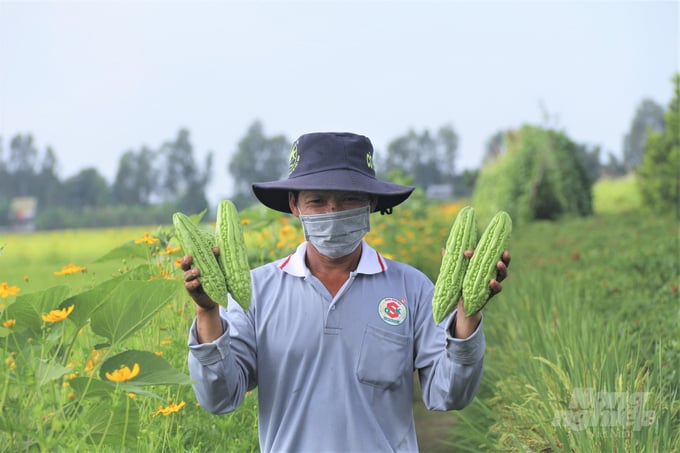
Informaton dissemination must start with leading kernels, models and cooperatives. Photo: Pham Hieu.
According to Mr. Le Duc Thinh, informaton dissemination must first start with leading kernels, models and cooperatives. Subsequently, lessons can be drawn in raising awareness and capacity for the cooperative economic sector as well as rural communities.
Secondly, the Department plans to establish concentrated production areas and qualified raw material areas as examples to guide cooperatives in building economic models that combine sustainable agricultural product value chain development with agricultural products diversification, green economy and circular economy application.
Thirdly, the Department will cooperate with universities, research units and businesses to develop textbooks and teaching materials for cooperatives in localities.
Fourthly, the Department will coordinate with the system of Local Departments and Sub-Departments of Agriculture and Rural Development in building a green economy, circular agriculture model for implementation and replication in practice.
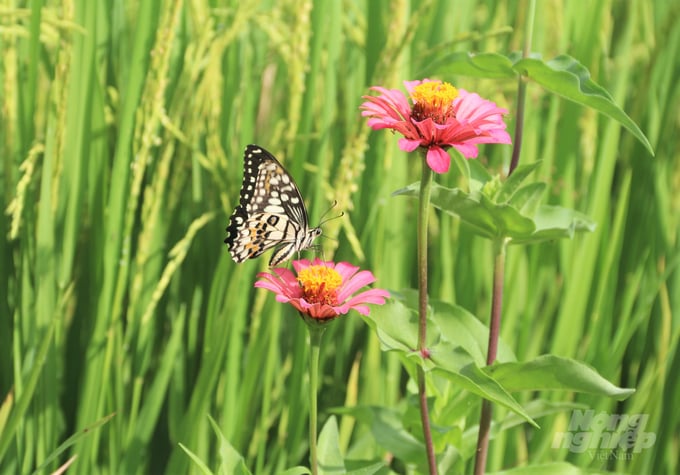
Solutions to develop green economy and circular agriculture need to be implemented at different levels. Photo: Pham Hieu.
According to Assoc. Prof. Dr. Mai Van Trinh, Director of the Institute for Agricultural Environment, one of the prerequisites to the development of green economy and circular agriculture is the reduction of greenhouse gas emissions.
Experts have subsequently given specific solutions in agricultural production such as limiting burning for crop production and by-products; using fuel-efficient tillage machines, reducing tillage to a minimum; improving production technology for fertilizers, plant protection drugs and animal feeds; using low-fuel seeders; combining fertilizers; limiting the use and spraying of chemical pesticides; reducing irrigation water and increasing irrigation efficiency through the use of less fuel-consuming pumps, reducing water loss; using less fuel-consuming mowers.
In addition, it is necessary to use combine harvesters in harvesting; improve drying technology to save fuel and utilize renewable and biological energy; improve processing technology to save fuel and utilize renewable and biological energy; recycle waste.
Moreover, manage organic fertilizer through the use of biogas, compost production, biological buffering; drain water for drying fields in rice production; limit biomass burning, recycle waste; apply nitrogen fertilizer according to the needs of the plant, control and balance slow-soluble nitrogen and so on.
According to Assoc. Prof. Dr. Mai Van Trinh, the concept of greenhouse gas emissions and solutions to reduce greenhouse gas emissions have not been clearly identified with regards to agricultural prodiction. In addition, investment in construction and technology is necessary to help farmers and agricultural cooperatives develop green economy and circular agriculture. On the other hand, practice shows that the agricultural sector lack clear mechanisms on carbon credits, limits, certifications, etc. The carbon market is still underdeveloped, so the price of carbon is relatively low.
Translated by Nguyen Hai Long
/2025/05/25/4127-3-073637_820.jpg)
(VAN) Thanks to the promotion from an FAO-implemented project, vegetable production in greenhouses in Moc Chau has seen strong development, from 1.5 hectares in 2021 to nearly 50 hectares in 2024.

(VAN) FAO has recently supported USD 140,000 to implement the project 'Risk mitigation human-animal interface risks through disease control initiatives in pig farming.'

(VAN) The People's Committee of Tra Vinh province has approved an adjustment to the investment policy for the Green Hydrogen Plant project, increasing its area to approximately 52.76 hectares.
![Reducing emissions from rice fields: [2] Farmers’ commitment to the soil](https://t.ex-cdn.com/nongnghiepmoitruong.vn/608w/files/news/2025/05/05/dsc08881jpg-nongnghiep-140632.jpg)
(VAN) Clean rice cultivation model in Thuong Tan commune, Bac Tan Uyen district, is assisting local residents in achieving sustainable agriculture by substantially reducing costs, increasing productivity, and protecting the environment.

(VAN) At the conference to disseminate Resolution No. 68, AgriS introduced its digital agricultural ecosystem and reaffirmed its commitment to accompanying the Government in promoting private sector development and sustainable agriculture.

(VAN) 'Blue Ocean - Blue Foods' initiative is designed to restore marine ecosystems and establish sustainable livelihoods for local communities by cultivating a minimum of 1,000 hectares of cottonii seaweed in the first three years.
/2025/05/21/4642-3-112707_603.jpg)
(VAN) The V-SCOPE project has made direct contributions to three out of six pillars of the Comprehensive Strategic Partnership between Vietnam and Australia.